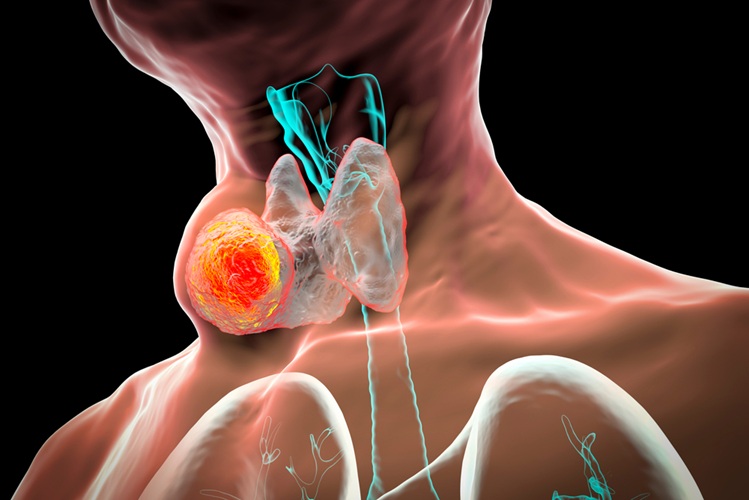Aspirin Prevents Diseases by Controlling Nucleolar Stress
|
By LabMedica International staff writers Posted on 13 Jun 2018 |
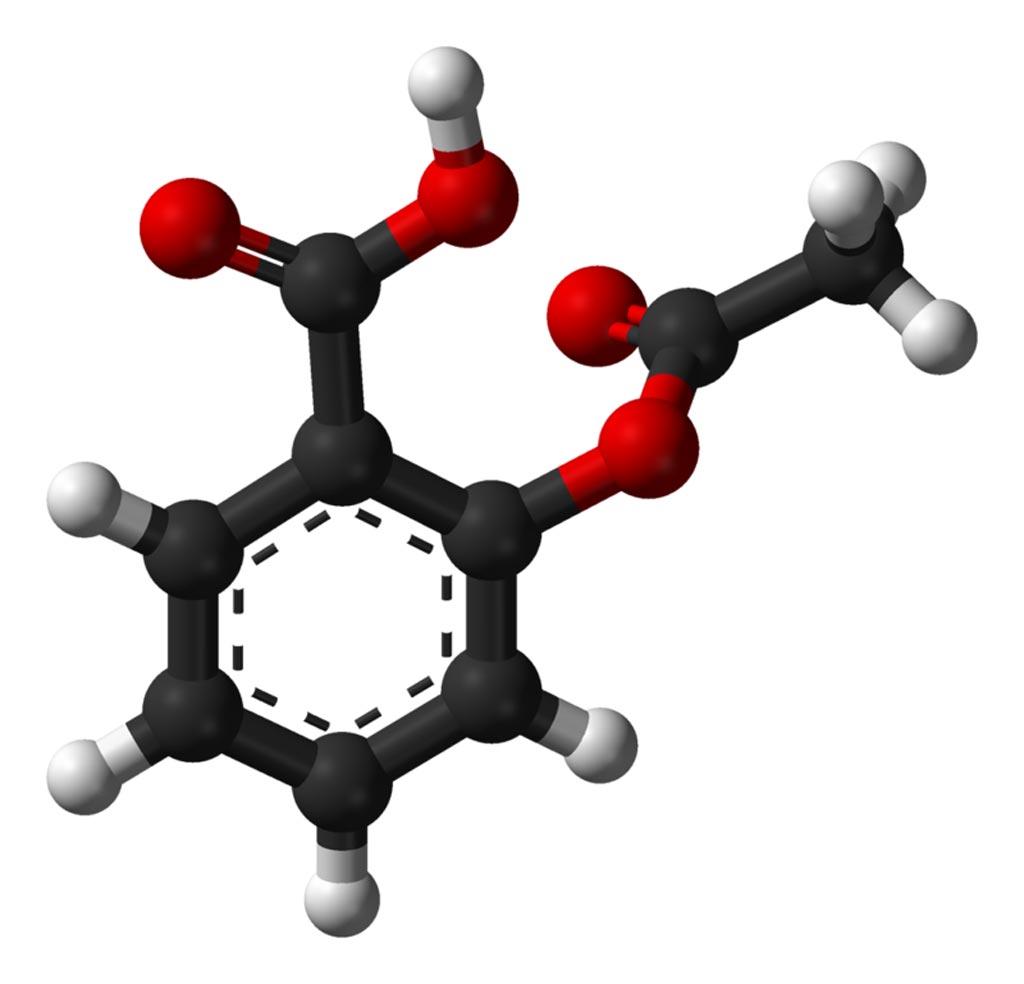
Image: A ball-and-stick model of the aspirin molecule, as found in the solid state (Photo courtesy of Wikimedia Commons).
By identifying the molecular factors controlling nucleolar stress, researchers were able to outline the mechanism by which aspirin affects this stress and protects against certain disease states including colon cancer.
The nucleolus, the site of ribosome biogenesis, is the largest structure in the nucleus of eukaryotic cells. Nucleoli participate in the formation of signal recognition particles and play a role in the cell's response to stress. Nucleoli comprise proteins, DNA, and RNA and form around specific chromosomal regions called nucleolar organizing regions. Malfunction of nucleoli can be the cause of several human conditions called nucleolopathies, and the nucleolus is being investigated as a target for cancer chemotherapy.
The tumor suppressor gene p53 is well known as an effector of nucleolar stress, but p53 independent mechanisms are largely unknown. Like p53, the NF-kappaB transcription factor plays a critical role in maintaining cellular homeostasis under stress. Many stresses that stimulate NF-kappaB also disrupt nucleoli. However, the link between nucleolar function and activation of the NF-κB pathway is as yet unknown.
Towards a better understanding of nucleolar stress, investigators at the University of Edinburgh (United Kingdom) studied this phenomenon in cell cultures and tumor biopsy specimens removed from colon cancer patients.
They reported in the June 5, 2018, online edition of the journal Nucleic Acids Research that artificial disruption of the PolI (DNA polymerase iota) complex stimulated NF-kappaB signaling. Unlike p53 nucleolar stress response, this effect did not appear to be linked to inhibition of rDNA (ribosomal DNA) transcription. Specific stress stimuli of NF-kappaB induced degradation of a critical component of the PolI complex, TIF-IA. This degradation preceded activation of NF-kappaB and was associated with increased nucleolar size.
Blocking TIF-IA degradation with aspirin blocked stress effects on nucleolar size and NF-kappaB signaling. This was demonstrated by showing a strong correlation between degradation of TIF-IA and activation of NF-kappaB in colorectal tumor biopsy cultures exposed to aspirin.
Senior author Dr. Lesley Stark, senior lecturer on the cancer research center at the University of Edinburgh, said, "We are really excited by these findings as they suggest a mechanism by which aspirin may act to prevent multiple diseases. A better understanding of how aspirin blocks TIF-IA and nucleolar activity provides great promise for the development of new treatments and targeted therapy."
Related Links:
University of Edinburgh
The nucleolus, the site of ribosome biogenesis, is the largest structure in the nucleus of eukaryotic cells. Nucleoli participate in the formation of signal recognition particles and play a role in the cell's response to stress. Nucleoli comprise proteins, DNA, and RNA and form around specific chromosomal regions called nucleolar organizing regions. Malfunction of nucleoli can be the cause of several human conditions called nucleolopathies, and the nucleolus is being investigated as a target for cancer chemotherapy.
The tumor suppressor gene p53 is well known as an effector of nucleolar stress, but p53 independent mechanisms are largely unknown. Like p53, the NF-kappaB transcription factor plays a critical role in maintaining cellular homeostasis under stress. Many stresses that stimulate NF-kappaB also disrupt nucleoli. However, the link between nucleolar function and activation of the NF-κB pathway is as yet unknown.
Towards a better understanding of nucleolar stress, investigators at the University of Edinburgh (United Kingdom) studied this phenomenon in cell cultures and tumor biopsy specimens removed from colon cancer patients.
They reported in the June 5, 2018, online edition of the journal Nucleic Acids Research that artificial disruption of the PolI (DNA polymerase iota) complex stimulated NF-kappaB signaling. Unlike p53 nucleolar stress response, this effect did not appear to be linked to inhibition of rDNA (ribosomal DNA) transcription. Specific stress stimuli of NF-kappaB induced degradation of a critical component of the PolI complex, TIF-IA. This degradation preceded activation of NF-kappaB and was associated with increased nucleolar size.
Blocking TIF-IA degradation with aspirin blocked stress effects on nucleolar size and NF-kappaB signaling. This was demonstrated by showing a strong correlation between degradation of TIF-IA and activation of NF-kappaB in colorectal tumor biopsy cultures exposed to aspirin.
Senior author Dr. Lesley Stark, senior lecturer on the cancer research center at the University of Edinburgh, said, "We are really excited by these findings as they suggest a mechanism by which aspirin may act to prevent multiple diseases. A better understanding of how aspirin blocks TIF-IA and nucleolar activity provides great promise for the development of new treatments and targeted therapy."
Related Links:
University of Edinburgh
Latest BioResearch News
- Genome Analysis Predicts Likelihood of Neurodisability in Oxygen-Deprived Newborns
- Gene Panel Predicts Disease Progession for Patients with B-cell Lymphoma
- New Method Simplifies Preparation of Tumor Genomic DNA Libraries
- New Tool Developed for Diagnosis of Chronic HBV Infection
- Panel of Genetic Loci Accurately Predicts Risk of Developing Gout
- Disrupted TGFB Signaling Linked to Increased Cancer-Related Bacteria
- Gene Fusion Protein Proposed as Prostate Cancer Biomarker
- NIV Test to Diagnose and Monitor Vascular Complications in Diabetes
- Semen Exosome MicroRNA Proves Biomarker for Prostate Cancer
- Genetic Loci Link Plasma Lipid Levels to CVD Risk
- Newly Identified Gene Network Aids in Early Diagnosis of Autism Spectrum Disorder
- Link Confirmed between Living in Poverty and Developing Diseases
- Genomic Study Identifies Kidney Disease Loci in Type I Diabetes Patients
- Liquid Biopsy More Effective for Analyzing Tumor Drug Resistance Mutations
- New Liquid Biopsy Assay Reveals Host-Pathogen Interactions
- Method Developed for Enriching Trophoblast Population in Samples
Channels
Clinical Chemistry
view channel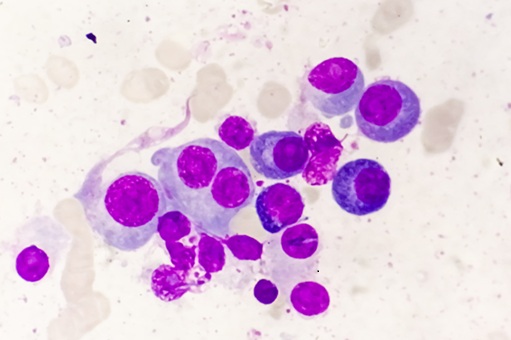
Mass Spectrometry-Based Monitoring Technique to Predict and Identify Early Myeloma Relapse
Myeloma, a type of cancer that affects the bone marrow, is currently incurable, though many patients can live for over 10 years after diagnosis. However, around 1 in 5 individuals with myeloma have a high-risk... Read more
‘Brilliantly Luminous’ Nanoscale Chemical Tool to Improve Disease Detection
Thousands of commercially available glowing molecules known as fluorophores are commonly used in medical imaging, disease detection, biomarker tagging, and chemical analysis. They are also integral in... Read more
Low-Cost Portable Screening Test to Transform Kidney Disease Detection
Millions of individuals suffer from kidney disease, which often remains undiagnosed until it has reached a critical stage. This silent epidemic not only diminishes the quality of life for those affected... Read more
New Method Uses Pulsed Infrared Light to Find Cancer's 'Fingerprints' In Blood Plasma
Cancer diagnoses have traditionally relied on invasive or time-consuming procedures like tissue biopsies. Now, new research published in ACS Central Science introduces a method that utilizes pulsed infrared... Read moreMolecular Diagnostics
view channel
Genetic-Based Tool Predicts Survival Outcomes of Pancreatic Cancer Patients
A tumor marker is a substance found in the body that may signal the presence of cancer. These substances, which can include proteins, genes, molecules, or other biological compounds, are either produced... Read more
Urine Test Diagnoses Early-Stage Prostate Cancer
Prostate cancer is one of the leading causes of death among men worldwide. A major challenge in diagnosing the disease is the absence of reliable biomarkers that can detect early-stage tumors.... Read moreHematology
view channel
New Scoring System Predicts Risk of Developing Cancer from Common Blood Disorder
Clonal cytopenia of undetermined significance (CCUS) is a blood disorder commonly found in older adults, characterized by mutations in blood cells and a low blood count, but without any obvious cause or... Read more
Non-Invasive Prenatal Test for Fetal RhD Status Demonstrates 100% Accuracy
In the United States, approximately 15% of pregnant individuals are RhD-negative. However, in about 40% of these cases, the fetus is also RhD-negative, making the administration of RhoGAM unnecessary.... Read moreImmunology
view channel
Stem Cell Test Predicts Treatment Outcome for Patients with Platinum-Resistant Ovarian Cancer
Epithelial ovarian cancer frequently responds to chemotherapy initially, but eventually, the tumor develops resistance to the therapy, leading to regrowth. This resistance is partially due to the activation... Read more
Machine Learning-Enabled Blood Test Predicts Immunotherapy Response in Lymphoma Patients
Chimeric antigen receptor (CAR) T-cell therapy has emerged as one of the most promising recent developments in the treatment of blood cancers. However, over half of non-Hodgkin lymphoma (NHL) patients... Read moreMicrobiology
view channel
New Test Diagnoses Bacterial Meningitis Quickly and Accurately
Bacterial meningitis is a potentially fatal condition, with one in six patients dying and half of the survivors experiencing lasting symptoms. Therefore, rapid diagnosis and treatment are critical.... Read more
Handheld Device Delivers Low-Cost TB Results in Less Than One Hour
Tuberculosis (TB) remains the deadliest infectious disease globally, affecting an estimated 10 million people annually. In 2021, about 4.2 million TB cases went undiagnosed or unreported, mainly due to... Read more
New AI-Based Method Improves Diagnosis of Drug-Resistant Infections
Drug-resistant infections, particularly those caused by deadly bacteria like tuberculosis and staphylococcus, are rapidly emerging as a global health emergency. These infections are more difficult to treat,... Read more
Breakthrough Diagnostic Technology Identifies Bacterial Infections with Almost 100% Accuracy within Three Hours
Rapid and precise identification of pathogenic microbes in patient samples is essential for the effective treatment of acute infectious diseases, such as sepsis. The fluorescence in situ hybridization... Read morePathology
view channel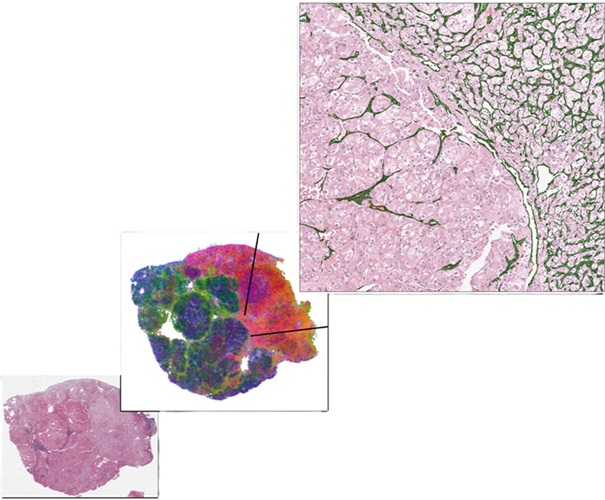
AI-Based Model Predicts Kidney Cancer Therapy Response
Each year, nearly 435,000 individuals are diagnosed with clear cell renal cell carcinoma (ccRCC), making it the most prevalent subtype of kidney cancer. When the disease spreads, anti-angiogenic therapies... Read more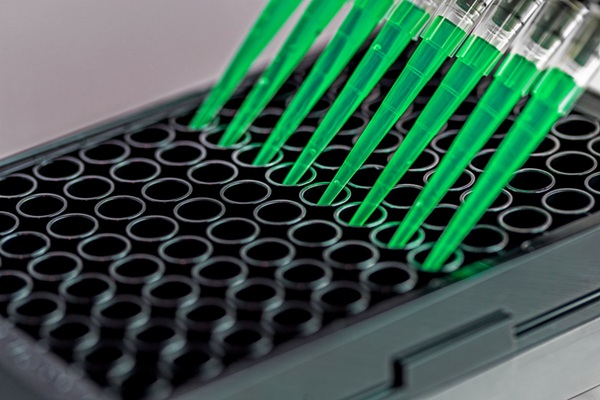
Sensitive and Specific DUB Enzyme Assay Kits Require Minimal Setup Without Substrate Preparation
Ubiquitination and deubiquitination are two important physiological processes in the ubiquitin-proteasome system, responsible for protein degradation in cells. Deubiquitinating (DUB) enzymes contain around... Read moreTechnology
view channel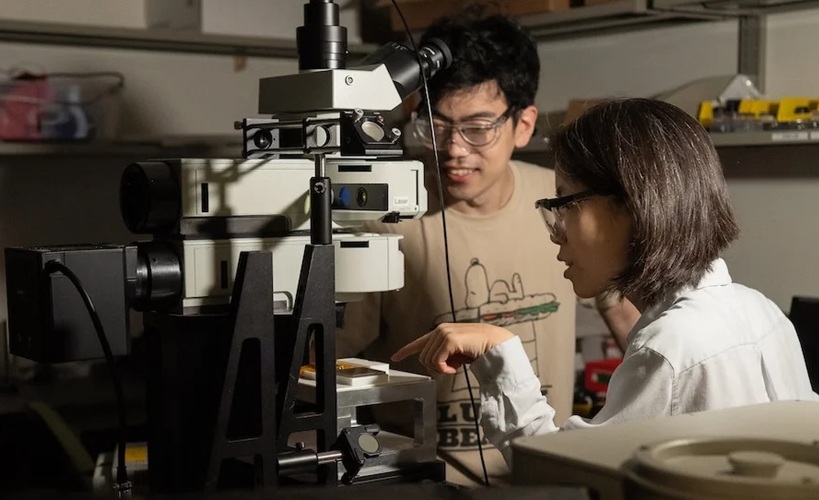
Light Signature Algorithm to Enable Faster and More Precise Medical Diagnoses
Every material or molecule interacts with light in a unique way, creating a distinct pattern, much like a fingerprint. Optical spectroscopy, which involves shining a laser on a material and observing how... Read more
Disposable Microchip Technology Could Selectively Detect HIV in Whole Blood Samples
As of the end of 2023, approximately 40 million people globally were living with HIV, and around 630,000 individuals died from AIDS-related illnesses that same year. Despite a substantial decline in deaths... Read more
Pain-On-A-Chip Microfluidic Device Determines Types of Chronic Pain from Blood Samples
Chronic pain is a widespread condition that remains difficult to manage, and existing clinical methods for its treatment rely largely on self-reporting, which can be subjective and especially problematic... Read more
Innovative, Label-Free Ratiometric Fluorosensor Enables More Sensitive Viral RNA Detection
Viruses present a major global health risk, as demonstrated by recent pandemics, making early detection and identification essential for preventing new outbreaks. While traditional detection methods are... Read moreIndustry
view channel
Cepheid and Oxford Nanopore Technologies Partner on Advancing Automated Sequencing-Based Solutions
Cepheid (Sunnyvale, CA, USA), a leading molecular diagnostics company, and Oxford Nanopore Technologies (Oxford, UK), the company behind a new generation of sequencing-based molecular analysis technologies,... Read more
Grifols and Tecan’s IBL Collaborate on Advanced Biomarker Panels
Grifols (Barcelona, Spain), one of the world’s leading producers of plasma-derived medicines and innovative diagnostic solutions, is expanding its offer in clinical diagnostics through a strategic partnership... Read more

















